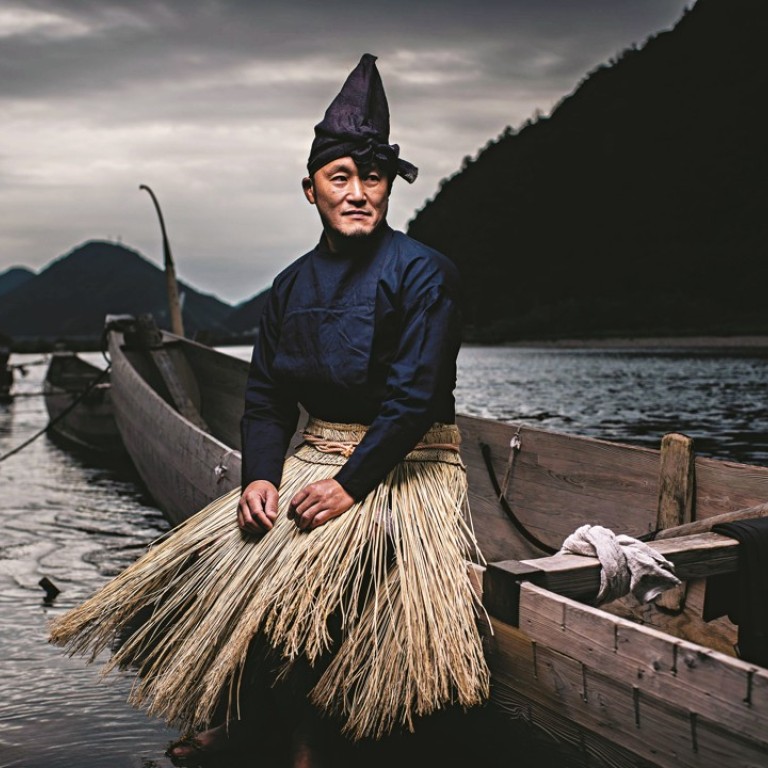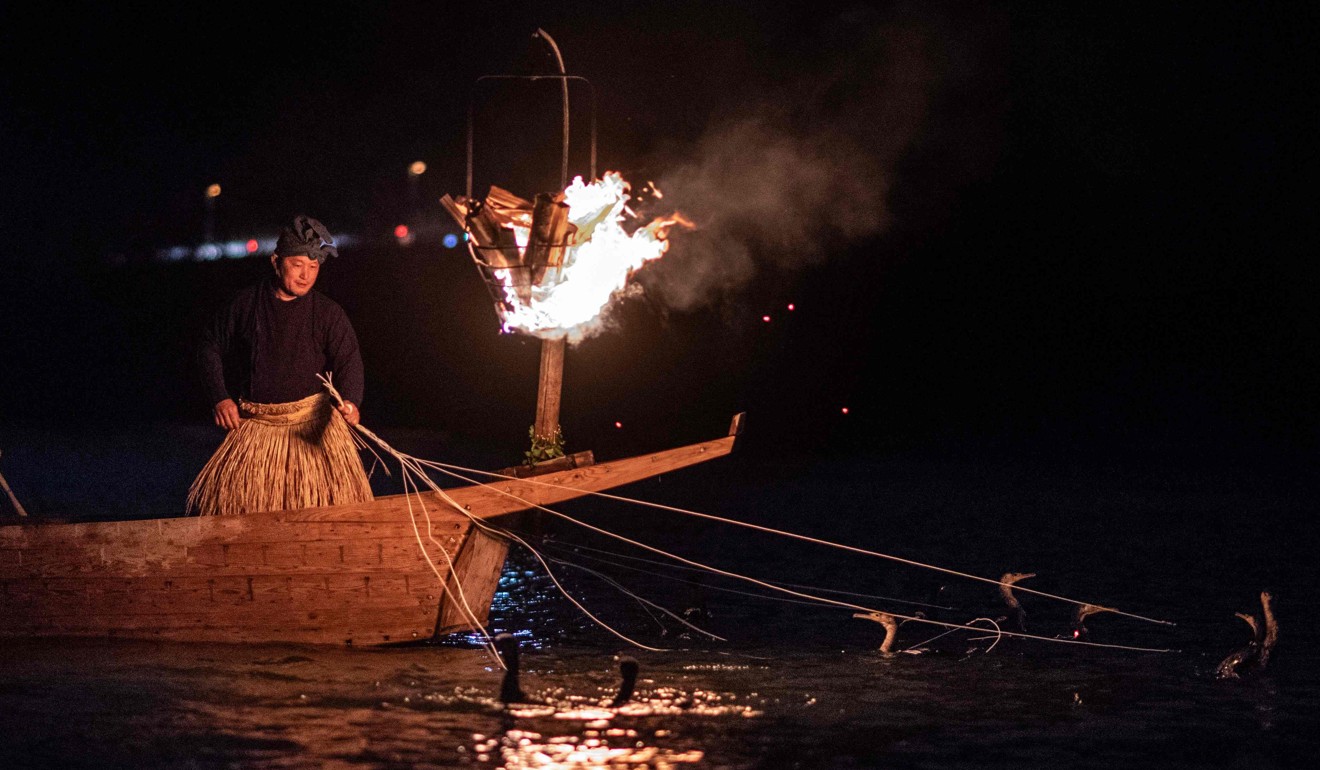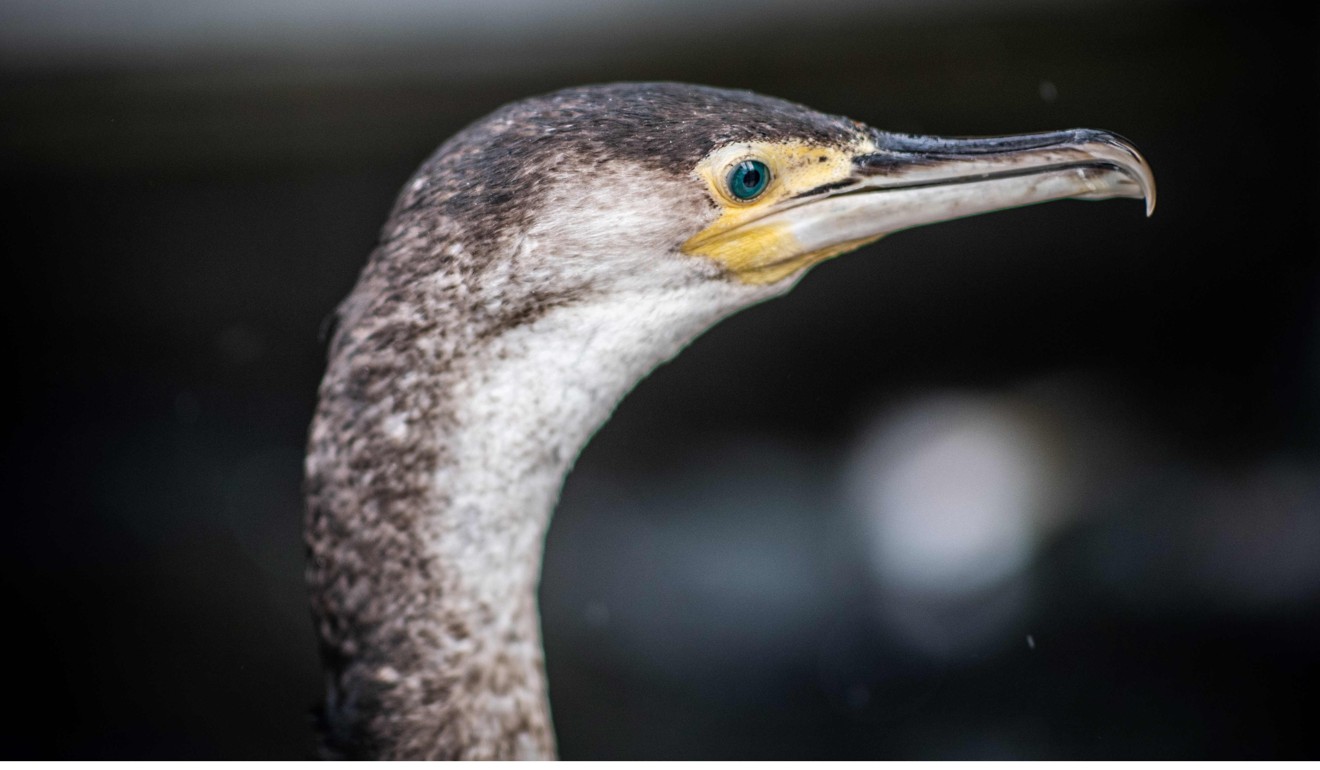
Japanese cormorant fishermen keep alive tradition that belongs to another age
- The birds are roped together and the fishermen tie string around each one’s throat to stop them eating the fish they catch
- The practice has been in gradual decline for centuries
In the pitch black night, fires burn alongside a river in the city of Gifu in Japan as a handful of men prepare for a ritual that dates back more than 1,300 years: fishing with cormorants.
Dressed in traditional clothes, they look like they come from another time. They wield their cormorants, tied together with strings, like puppeteers.
First tuna auction at Japan’s ‘new Tsukiji’ fish market after long delay
Their profession, known as ukai, was once common in waterside villages and towns throughout Japan and in other parts of the world, including southern China.
It has been in gradual decline for centuries, though, and now lives on in Japan as a tourist attraction and a carefully protected part of the country’s national heritage.
At 46, Shuji Sugiyama is the youngest of the cormorant fishermen in Gifu, in western Japan. And he is one of just nine people to hold an imperial licence to practice the art. He sits quietly on a rock by the inky waters of the Nagara River, apparently undisturbed by the chatter of his fellow fishermen.
“It’s because we live together, the man and the cormorants, that ukai fishing is possible,” he says. “For example, I could never fish with another master’s cormorants,” he adds, as he feels the throats of his birds and prepares for the night’s expedition.
Centuries ago, the profession flourished, but by the time the palace began issuing imperial licences to usho in 1890, the art was already on the decline.

In return for their licences, the fishermen turn over eight catches a year to the imperial palace and receive a symbolic salary of 8,000 yen (US$71) a month. Theirs is hardly a commercial enterprise, and the usho rely on subsidies from local authorities that have turned the profession into a tourist draw and hope to see ukai make the Unesco World Heritage list.
“Cormorant fishing is the biggest tourist draw we have in Gifu city,” says local tourism division chief Kazuhiro Tada. “More than 100,000 people a year come to see it, and their numbers are growing.”
Sugiyama inherited the job from his father, fishing alongside him until he obtained official usho status in 2002.
Five generations of his family have practised the unusual fishing technique, once practised in Europe but now confined mostly to Japan and China. The job requires a tolerance for unusual hours – fishing takes place after sundown, with the usho using flaming lamps hung on their boats to attract fish below the surface.

While the fishing season runs from May until October, each fisherman’s cormorants require daily care all year round. New birds arrive each autumn, after being captured during their migration across Ibaraki province north of Tokyo, and must be trained – a process that takes three years.
“I usually take about 10 birds fishing, and I integrate the new ones with the group so they will imitate the older ones and learn how to fish,” Sugiyama says.
The evening’s fishing begins with assistants marching through the alleys near the riverbanks, carrying the cormorants in bamboo cages to their masters.

The fishermen wear traditional outfits: a blue shirt and matching bulbous hat said to protect against the ashes of the lamps; long straw skirts to keep out water and cold; and truncated sandals that leave the heels exposed to prevent slipping.
Flaming torches are hung on the boats to attract the small trout known as ayu, and a draw determines the order the boats will move out in. The cormorants are tied together with ropes, and the fishermen tie string around each bird’s throat to prevent them from eating the catch.
The loops leave the birds enough space to eat smaller fish, and are removed when the night’s catch is complete.

The birds are expert fishers and instantly kill their prey with their razor sharp beaks. When one surfaces with a fish, his usho pries it from the bird’s gullet, then sends it back into the water.
At the peak of the catch, the air is full with the sound of squawking birds, shouting fisherman and the rhythmic tapping produced by boatmen banging sticks on the sides of the vessel.
Tourists on separate boats float around the fishermen, snapping photos. At the end of the season, Sugiyama will be able to relax a little, but he does not expect to take a holiday any time soon.

“I have a son who is still in primary school. I have the feeling that he has started to be interested in my work,” he says.
“He sees me every day with the cormorants, and I hope that one day he’ll take my place.”
Getting there
Hong Kong Express, Cathay Pacific and ANA fly between Hong Kong and Nagoya.

.png?itok=arIb17P0)